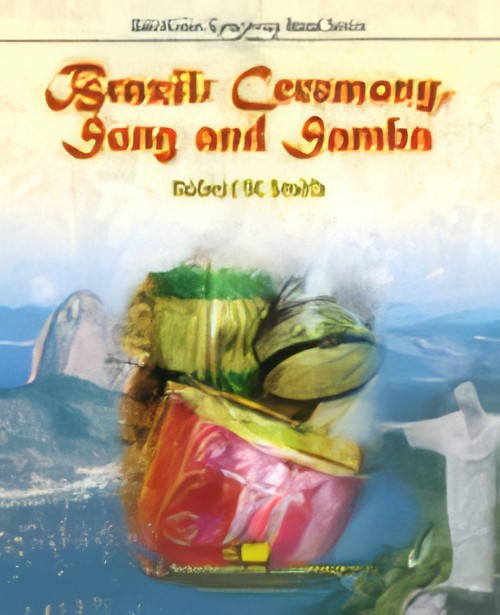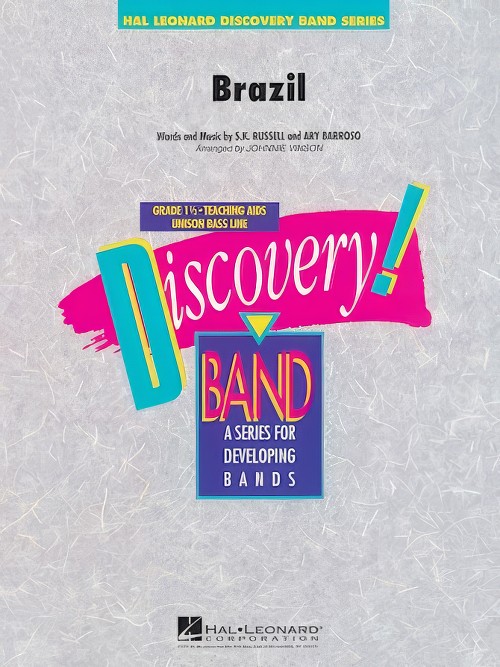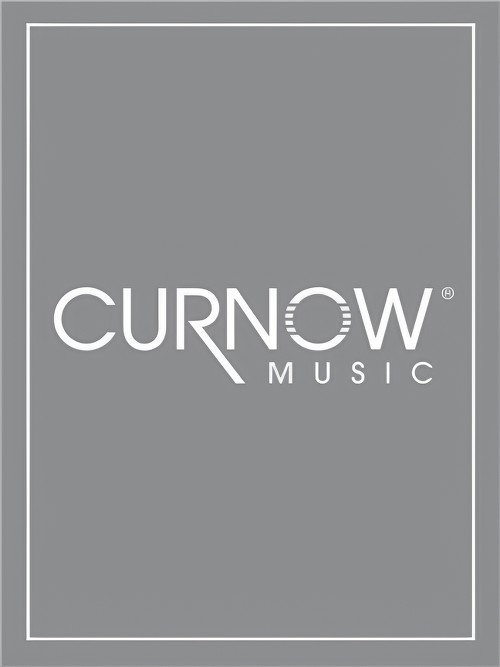Results
-
 £98.00
£98.00Brazil: Ceremony, Song and Samba (Concert Band - Score and Parts) - Smith, Robert W.
At long last, Robert W. Smith continues his musical journey that began in western Africa years ago and now takes us to Brazil. Based upon authentic Afro-Brazilian percussion grooves, "Brazil: Ceremony, Song and Samba" is comprised of three musical sections illustrating the impact of the African experience on music of this part of the world. Beginning in northern Brazil with the Ceremony, the piece transitions to Rio di Janiero and the smooth sounds of the bossa nova that has become so popular throughout the world. The piece concludes with the exciting sounds of Carnaval and the Samba Schools that fill the streets during the annual celebration. Exciting, musically rewarding and extremely effective in any concert setting!Duration: 6.30
Estimated delivery 7-14 working days
-
 £99.50
£99.50Brazil : Ceremony, Song and Samba - Robert W. Smith
At long last, Robert W. Smith continues his musical journey that began in western Africa years ago and now takes us to Brazil. Based upon authentic Afro-Brazilian percussion grooves, "Brazil: Ceremony, Song and Samba" is comprised of three musical sections illustrating the impact of the African experience on music of this part of the world. Beginning in northern Brazil with the Ceremony, the piece transitions to Rio di Janiero and the smooth sounds of the bossa nova that has become so popular throughout the world. The piece concludes with the exciting sounds of Carnaval and the Samba Schools that fill the streets during the annual celebration. Exciting, musicallyrewarding and extremely effective in any concert setting!
Estimated delivery 7-14 working days
-
 £42.50
£42.50Brazil (Concert Band - Score and Parts) - Barroso & Russell - Vinson, Johnnie
One of the best-known Latin standards of all time! Johnnie has done a great job of adapting this popular song while maintaining an authentic Latin feel.
Estimated delivery 7-14 working days
-
 £74.99
£74.99 -
 £42.50
£42.50Brazil - Ary Barroso
One of the best-known Latin standards of all time! Johnnie has done a great job of adapting this popular song while maintaining an authentic Latin feel.
Estimated delivery 7-14 working days
-
£74.99
E-Mail from Brazil - Harm Evers
Estimated delivery 7-14 working days
-
 £61.00
£61.00 -
 £68.99
£68.99Bay Town Festival (Concert Band - Score and Parts) - Hannickel, Mike
The city of Salvador, Brazil is also known as Bahia. From 1549 to 1763 this bay was the capital of the Portuguese colony of Brazil and is located 800 miles northwest of Rio de Janeiro on the Atlantic Ocean Bay of All Saints. Take your band on a trip to a party at the town known as Bahia!Duration: 2.45
Estimated delivery 7-14 working days
-
£68.99
Bay Town Festival - Mike Hannickel
The city of Salvador, Brazil is also known as Bahia. From 1549 to 1763 this bay was the capital of the Portuguese colony of Brazil and is located 800 miles northwest of Rio de Janeiro on the Atlantic Ocean Bay of All Saints. Take your band on a trip to a party (Festa Festival) at the town known as Bahia!
Estimated delivery 7-14 working days
-
 £113.30
£113.30Moderate Dances - Angelo Sormani
This piece is a tribute to dance music, especially passionate, intense and meditative dance music. "Moderate Dances" is divided into three movements: a "Tango", a "Slow Waltz" and a "Bossa Nova". Each movement and each dance has its own particular characteristics but, when combined, these different rhythmic beats and times give the piece a feeling of completeness and uniformity. The Tango started to flourish in the suburbs of Buenos Aires in around 1880. There is still some doubt as to its origins, which may be Cuban (Habanera) but are probably African. It was most popular in Argentina and Brazil: here the male protagonist was originally the "gaucho" with his inseparable guitar, later to be replaced by the proud, elegant "compadre". By around 1910 the Tango had spread to Italy and France. New clubs opened, where the upper classes could watch and dance the Tango. Here the dance also underwent some rapid transformations. The exaggerated and extravagant gestures and body movements disappeared. Slow, gliding steps replaced the old rotational movements. The women's red ankle-boots and the partners "staring into each other's eyes" accentuated the erotic nature and sensuality of this dance. So much so that, in 1913, the German government banned soldiers from dancing the Tango. Those who broke the law were immediately discharged from the army. From a strictly musical perspective, the basic instruments were a flute, a harp (the diatonic harp typically played by the Indians of Paraguay) and a violin, or flute, guitar and violin or even clarinet, guitar and violin. These instruments were easy to transport, ideal for playing at parties, in the streets and in courtyards. The musicians played by ear, frequently improvising: there were no scores, no records, which is the main reason why it is impossible to trace the Tango back to its exact origins. However, the Tango's evolution (and growing popularity) was once again fostered by its fundamental ability to absorb "other" cultures, languages and sounds. And it was the arrival of the "bandoneon" (an accordion-like instrument that was invented in Germany and brought to Rio de la Plata by some immigrant), which replaced the flute, that marked the beginning of the Tango's huge success outside Argentina. A number of talented composers, above all the great Astor Piazzola (1921-1992), transformed the bandoneon from a simple accompanying instrument to a solo instrument that was to become the distinguishing feature of the 20th century Tango. The Slow Waltz originated from the Waltz, the typical dance of the Bavarian and Tyrolese peasants in the 1700s. It was composers like Johann Strauss, father and son, who carried the Waltz to its zenith in the 1800s, creating the sensual and melancholy yet joyful and charming dance we are all familiar with. When the Waltz first became popular in Germany, the members of respectable society were shocked at the closeness of the dancing partners, who had always previously danced apart. The main difference between the Waltz and Slow Waltz is that the latter has a slower, more expressive rhythm: the men wear tails and the women wear ball gowns decorated with beads and feathers and couples dance in graceful rotational movements. "Bossa Nova" is the title of the last movement in the piece. Jobim, the great Brazilian musician, described this musical genre as a combination of modern Jazz and Samba. Bossa Nova means "new wave". This was the name of the artistic and musical movement that evolved in Brazil in the late Fifties and was extremely popular throughout the Sixties. The songs are usually about love or social matters, drawing inspiration from the slums of Rio De Janeiro and the lives of their inhabitants. Bossa Nova, with its original compositions and the artistic talent of its musicians, also became hugely popular in the United States and Europe, and top Jazz musicians (Ella Fitzgerald, Stan Getz, Bob Cooper, Charlie Bird, Sonny Rollins, Dexter Gordon, Dizzy Gillespie) started to include Bossa in their repertoires.
Estimated delivery 7-14 working days
